Olson Kundig Architects' Sol Duc Cabin in West Washington is small but perfectly formed
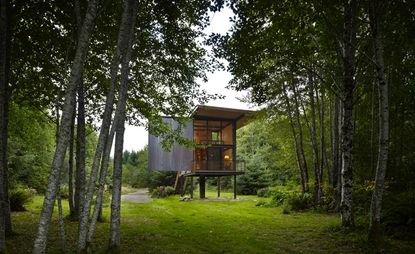
This unique cabin was designed for a client who travels regularly to the Olympic Peninsula to fly-fish for steelhead (also known as rainbow trout) in the Sol Duc River. Created by Tom Kundig of Seattle-based Olson Kundig Architects, the structure not only responds to its immediate natural context, but also efficiently fulfils a simple but particular program.
The Sol Duc cabin is made of steel panels that give it a hermetic, bunker-like look when shut. These aren’t, however, mere aesthetic elements – they shield the structure from the region's occasional severe weather conditions, making it compact and low maintenance. To add to its ‘near-indestructability’, and to avoid occasional floods, the house is elevated on four steel pillars.
Built to act as a base for the couple's fishing expeditions in the area, the house features steel panels that slide open up to reveal large glass planes, providing the occupants with unimpeded views of the surrounding wilderness. In contrast to its robust exterior, the cabin’s interiors are warmly clad with leftover wood. They were designed in a simple layout, where the living room and kitchen are located on the lofty lower level, and the bedroom on the mezzanine.
Olson Kundig Architects' portfolio comprises several similarly small but beautiful constructions that demonstrate the practice's expertise in creating buildings that mediate between natural and man-built environments in compelling ways. This includes previous work such as the Delta Shelter, Olson Cabin, and the Rolling Huts. As with its predecessors, Cabin Sol Duc’s design is playful in the way it interacts with the surrounding nature, and clever in the manner the materials are used and re-used to fit specific purposes.
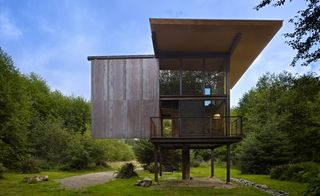
The cabin's position and open façade provide the occupants with unimpeded views of the surrounding wilderness
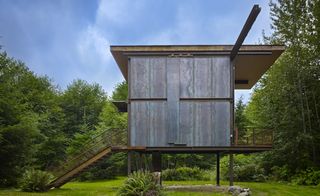
The Sol Duc cabin is made of steel panels that give it a hermetic, bunker-like look when shut
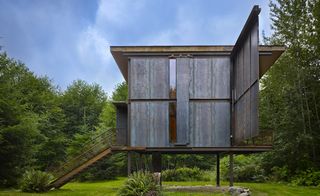
These aren’t, however, mere aesthetic elements – they shield the structure from the region's occasional severe weather conditions, making it compact and low maintenance, while opening up to offer more light when required
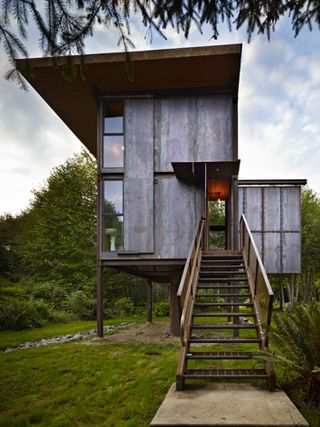
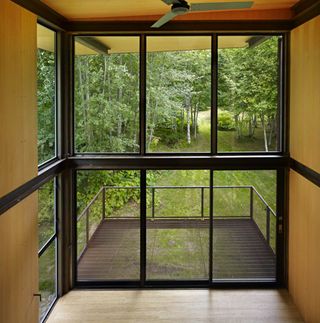
In contrast to its robust exterior, the cabin’s interiors are warmly clad with leftover wood
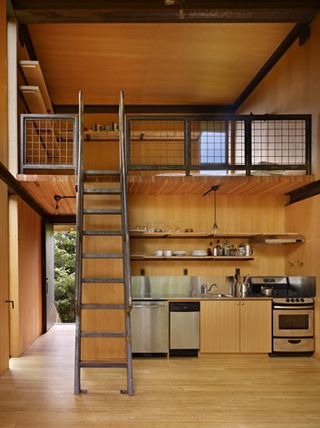
They were designed in a simple layout, where the living room and kitchen are located on the lofty lower level, and the bedroom on the mezzanine
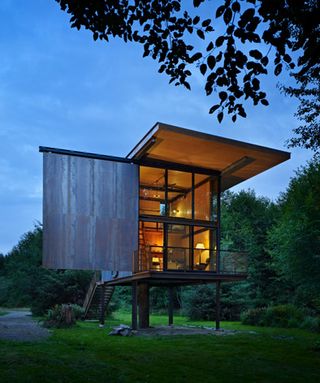
The covered balcony offers a sheltered area to enjoy the views
Wallpaper* Newsletter
Receive our daily digest of inspiration, escapism and design stories from around the world direct to your inbox.
-
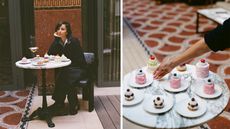 Take a bite: Laila Gohar and The Luxury Collection’s ‘Cakes & Candles’ are a sweet treat for the senses
Take a bite: Laila Gohar and The Luxury Collection’s ‘Cakes & Candles’ are a sweet treat for the sensesLaila Gohar’s six cake-inspired candles draw on The Luxury Collection’s hotels around the world – where guests can enjoy matching edible confections
By Tianna Williams Published
-
 The Wallpaper* guide to party dressing with abandon
The Wallpaper* guide to party dressing with abandonDecadent get-ups to let your sartorial hair down this festive season, ready for a month-long marathon of hedonism and indulgence
By Jack Moss Published
-
 C-Next Designers Europe hosted by Cosentino is forging the future of the interior design industry
C-Next Designers Europe hosted by Cosentino is forging the future of the interior design industry220 interior design professionals from 30 countries attended the invite-only event in Almeria for two days of factory tours, workshops and panel discussions
By Hugo Macdonald Published
-
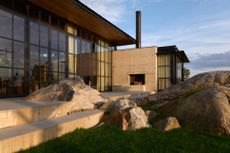 Dalarö House by Olson Kundig is a rock star
Dalarö House by Olson Kundig is a rock starDalarö House, US practice Olson Kundig’s first build in Sweden, takes centre stage in the Stockholm archipelago
By Ellie Stathaki Published
-
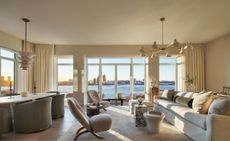 The Cortland interiors unveiled as we step inside its first residence in New York
The Cortland interiors unveiled as we step inside its first residence in New YorkNew York’s The Cortland by Robert AM Stern Architects and Olson Kundig unveils photography of its first residential interiors
By Ellie Stathaki Last updated
-
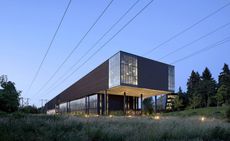 Nike celebrates 21/22 NBA season tip-off with opening of LeBron James Innovation Center
Nike celebrates 21/22 NBA season tip-off with opening of LeBron James Innovation CenterOlson Kundig designs LeBron James Innovation Center, named after the famous LA Lakers player, at Nike’s vast World Headquarters in Oregon, USA
By Jonathan Bell Last updated
-
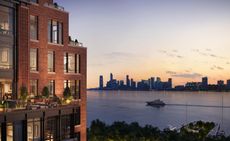 The Cortland unveils craft-inspired interiors by Olson Kundig
The Cortland unveils craft-inspired interiors by Olson KundigNew York’s latest residential development, The Cortland by Robert AM Stern Architects and Olson Kundig, reveals its interior design – the latter firm’s first ever multi-family project in town
By Ellie Stathaki Last updated
-
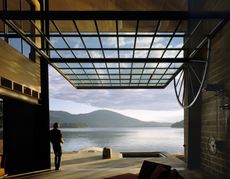 Olson Kundig refines the art of the perfect American cabin
Olson Kundig refines the art of the perfect American cabinSeattle-based architects Olson Kundig are experts in the art of composing the ideal contemporary cabin – an aspirational yet modest retreat. Here, we visit five of their projects within the genre
By Jonathan Bell Last updated
-
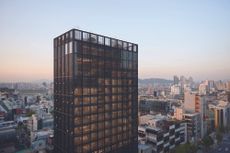 Exploring the scope of Tom Kundig’s international oeuvre
Exploring the scope of Tom Kundig’s international oeuvreTom Kundig: Working Title is an extensive monograph on the Seattle based architect's most recent work, published this summer by Princeton Architectural Press
By Ellie Stathaki Published
-
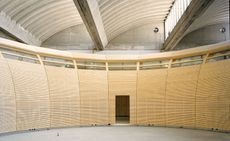 Olson Kundig’s children’s museum at Jewish Museum Berlin is inspired by Noah’s Ark
Olson Kundig’s children’s museum at Jewish Museum Berlin is inspired by Noah’s ArkBy Sophie Lovell Last updated
-
 Olson Kundig unveils its renovation of the Seattle Space Needle
Olson Kundig unveils its renovation of the Seattle Space NeedleBy Giovanna Dunmall Last updated